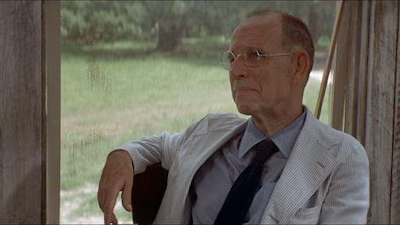Conrack

Brief Synopsis
Cast & Crew
Martin Ritt
Jon Voight
Paul Winfield
Hume Cronyn
James O'rear
Ruth Attaway
Film Details
Technical Specs
Synopsis
In the late 1960s, Pat Conroy accepts a teaching job on a small island of the South Carolina coast. When he gets there, Conroy finds that his school is essentially a shack, filled with illiterate students who cannot count, and do not even know that they live in the United States. Conroy disagrees with the methods of the principal who has convinced the students that they are lazy and unintelligent, and decides to try new ways to reach them. The students thrive as Conroy exposes them to films, classical music, and teaches them to swim. When his unconventional methods are criticized by the local leaders, Conroy responds by confronting them about the institutional racism that has held his students back.
Director

Martin Ritt
Videos
Movie Clip




Hosted Intro
Film Details
Technical Specs
Articles
Conrack
It's based on the award-winning memoir The Water is Wide by Pat Conroy, which chronicles his year teaching in a two-room schoolhouse on Daufuskie Island off the coast of South Carolina in the late 1960s (Conroy renamed it Yamacraw Island in his memoir, a change kept in the movie adaptation). Jon Voight plays Conroy in the film, called Patroy by the school's African-American principal and Conrack by the students, who all speak a heavy dialect, a result of the island's contained culture due to its isolation. Accessible solely by boat--no bridge connected it to the mainland--the impoverished community was almost entirely populated by black families descended from slaves. Discovering the kids are functionally illiterate and uninformed of life outside of their community, Conroy uses unconventional methods to reach his kids and inspire them to not just learn but to aspire to something beyond their circumscribed world through music, history, geography, even popular culture. Those methods ultimately set him on a collision course with the white school superintendent on the mainland (played by Hume Cronyn).
Voight described the character and his approach to Roger Ebert in a 1974 interview: "[Conroy] tried to communicate with them through the exuberance of his personality, and that's also what I tried to show with my performance." But, he added, "The guy comes over as sort of self-congratulatory. The real Pat Conroy has a certain cynical notion of himself; he didn't really think he was so terrific."
The film also stars Paul Winfield (who had previously starred in Ritt's Sounder in 1972) as Mad Billy, a moonshiner who trades his home brew for lessons in literacy from Conroy, and Madge Sinclair appears in her feature debut as the school principal, whose clashes with Conroy are balanced with her respect for his compassion and dedication.
Ritt cast local kids to play Conroy's students and worked with them to create the characters you see onscreen. "[Ritt] was an actor himself, he was very sympathetic to actors, very attuned to actors, and very patient with actors," explained screenwriter Harriet Frank, Jr., who was on the set with Ritt. "Any impatience he felt anywhere else in the world disappeared when he was working with actors." Voight praised Ritt's work with the children. "[T]hey hadn't been trained yet not to be honest. We set up a situation where the onscreen and the off-screen life on the set was about the same, and they responded with incredible warmth and willingness."
Though set in South Carolina, Ritt shot the film in Georgia, where he had previously made Sounder. Even several years after the passage of the Civil Rights Act of 1964, Ritt had to fight bigotry and discrimination while making Sounder when the local motel refused to accept African-American cast members. Before starting production on Conrack, Ritt appealed directly to the Governor of Georgia, Jimmy Carter, who "made all the state's facilities available" to the filmmakers.
The film was both praised and criticized for its story of a white teacher who challenges authority to inspire poor black children in a culture of institutional racism and segregation that still existed in parts of the American South at the time of the film's release. Pauline Kael was one of the film's defenders, celebrating its portrait of "an unrepressed man fighting a slowly dying system of repression" in a lengthy essay for The New Yorker, but many critics attacked the film for the film's focus on the white hero, Conroy's emphasis on the standard orthodoxy of European history and white male writers and artists. As Ritt biographer Carlton Jackson noted, the Southern-born Ritt "knew the South; there was nothing artificial about his Southern movies, in dialect, characterization or setting. Within the scope of their own subject matter and the way that subject matter was treated, Martin Ritt's southern films were genuine depictions of life and conflict."
The real-life Pat Conroy followed the award-winning memoir with a successful career writing novels, many of them inspired by his own experiences and few of them adapted into movies, including The Great Santini and The Prince of Tides.
Sources:
Interview with Jon Voight, Roger Ebert. Chicago Sun-Times, June 14, 1974, reprinted on the website RogerEbert.com.
Picking Up the Tab: The Life and Movies of Martin Ritt, Carlton Jackson. Bowling Green State University Popular Press, 1994.
Backstory 3: Interviews with Screenwriters of the 60s, edited by Patrick McGilligan. University of California Press, 1997.
AFI Catalog of Feature Films
IMDb
By Sean Axmaker

Conrack
Quotes
Trivia
Miscellaneous Notes
Released in United States Winter January 1, 1974
Released in United States Winter January 1, 1974

















